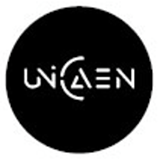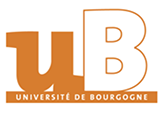Introduction
The University of Clermont-Ferrand is located in Clermont-Ferrand, a city in south-central France. It is a famous comprehensive national university with a long history in France.
Overview
Number of students and faculty: The University of Clermont-Ferrand has about 23,000 students, including about 2,500 foreign students, and more than 1,200 professors, lecturers and researchers of various types.
Campus distribution: The university has multiple campuses in Clermont-Ferrand and surrounding areas.
History
Its history can be traced back to the university established in Billon from the 12th century to the end of the 15th century. In the early 16th century, Bishop Thomas Duprat of Clermont established a new university in Issoire.
In 1896, the University of Clermont-Ferrand was officially established by merging two colleges (College of Letters and Sciences) and a medical school.
In 1976, due to political issues, the university was split into the University of Clermont-Ferrand I (University of Auvergne) and the University of Clermont-Ferrand II (University of Blaise Pascal).
In 2012, the two universities agreed to unify and officially merged into the University of Clermont-Ferrand Auvergne on January 1, 2017. In February of the same year, it was officially selected into the French "Excellence University Plan".
Foundation time
Formally established in 1896, 2017 Merged into Clermont Auvergne University in 2000.
School Strength
Teaching Quality: Academic education covers bachelor's, master's and doctoral degree courses, with rich professional settings, including law, economics, management, literature, language, humanities and social sciences, science, life sciences, health, agronomy, environment, technology and other disciplines, providing students with a wide range of choices. Teaching focuses on combining theory with practice to cultivate students' practical operation and problem-solving abilities.
Scientific Research Level: It has many internationally recognized research laboratories, such as the Magma and Volcano Laboratory, the Physical Meteorology Laboratory, the Institut Pascal Laboratory, etc. Its scientific research results have an important influence in related fields. The school actively promotes the transformation of scientific research results, conducts extensive cooperation with enterprises and social institutions, and has made important contributions to local economic and social development.
Institutional Nature
Public University.
Educational Philosophy
It is committed to providing high-quality education and cultivating students' ability to face future challenges. Its motto "Servir l'avenir" (Serve the Future) reflects this concept. The school focuses on creating an innovative and collaborative environment, encouraging students and teachers to participate in cutting-edge research and contribute to social development. At the same time, it also attaches importance to the integration of multiple cultures and strives to create an inclusive and friendly learning environment for students.
Key laboratories and disciplines
Key laboratories: Magma and Volcano Laboratory, Physical Meteorology Laboratory, Institut Pascal Laboratory, etc. These laboratories conduct in-depth research in the fields of earth science, meteorology, automation and robotics, etc., providing important support for the development of related disciplines and providing students with opportunities to participate in scientific research projects.
Key disciplines: Humanities, Health Engineering - Biomedical Diagnostics, Automation and Robotics, Basic Physics and Applications, Earth and Planetary Sciences - Environment, Development Economics and other majors are strong, some of which have high visibility and influence in France and even internationally.
Faculty
The merged Clermont Auvergne University has faculties such as Law, Economics, Management, Literature, Language, Humanities and Social Sciences, Science, Life Sciences, Health, Agronomy, Environment and Technology, covering many disciplines and providing students with comprehensive education and professional choices.
Ranking
Ranked 433rd in the 2019 US News World University Rankings.
Cost
As a French public university, the registration fee is relatively low, generally ranging from a few hundred euros, and the specific fee varies slightly depending on the major and degree level. In addition, students are required to bear their own living expenses, including accommodation, food, transportation and other expenses.
Campus
Campus environment: Clermont-Ferrand is located in the second largest natural scenic area in France, with a beautiful natural environment. It is also a vibrant industrial city with a developed economy and rich cultural life. The school's campus buildings are diverse in style, integrating historical and modern elements, providing students with a good learning and living atmosphere.
Campus facilities: The school has complete teaching facilities, including modern teaching buildings, libraries, laboratories, computer rooms, etc. It also has restaurants, dormitories, sports facilities and other life service facilities to meet students' daily needs and provide students with convenient learning and living conditions.
-

University of Angers
-

University of Bordeaux
-

University of Caen Normandy
-

Claude Bernard University Lyon 1
-

CY Cergy Paris University
-

Clermont Auvergne University
-

University of Artois
-

University of Burgundy
-

Jean Moulin University Lyon 3
-

University of Franche-Comté
-

Mesoamerican University
-

Istmo University
-

Mariano Galvez University of Guatemala
-

Regional University of Guatemala
-

Galileo University
-

Francisco Marroquín University
-

Rafael Landívar University
-

University of the Valley of Guatemala
-

University of San Carlos of Guatemala
-

Technological Institute of Tlaxcala Plateau
-

Golfo University
-

Technological University of South Sonora
-

Technological University of Huejotzingo
-

Tizimín Institute of Technology
-

Chilpancingo Institute of Technology

